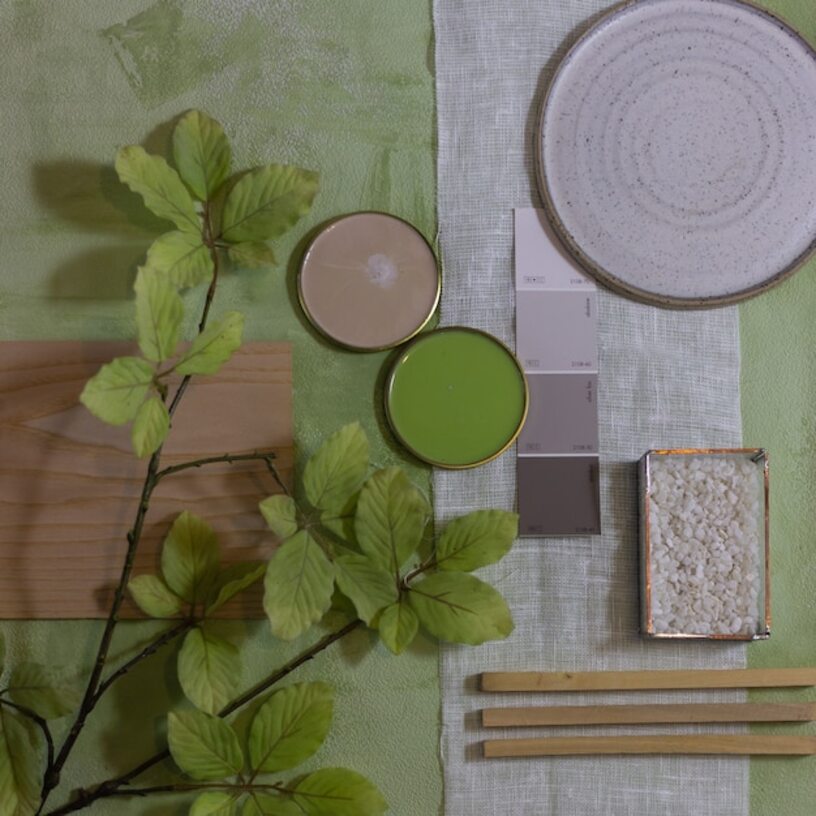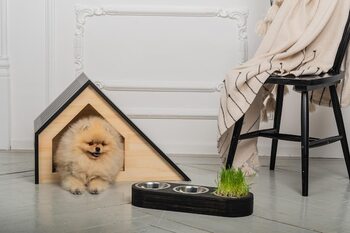Urban lifestyle: harmony between design and well-being

Urban lifestyle is constantly evolving, where the harmony between design and well-being becomes a necessity. In a world where the fast pace can generate stress, more and more people seek to create spaces that promote tranquility and connection with their surroundings. This article explores how to achieve a perfect balance between aesthetic functionality and personal well-being in urban and suburban spaces, turning your home into a refuge of peace, without sacrificing style.
The importance of sustainable design in urban environments
The importance of sustainable design in urban environments lies in its ability to improve the quality of life for residents and minimize environmental impact. In cities where space is limited, it is crucial to consider how each design element can contribute to a healthier and more harmonious environment. Choosing eco-friendly materials, incorporating green areas, and promoting energy efficiency not only helps reduce carbon footprint but also enhances the connection to nature, creating spaces that invite well-being and tranquility. This approach not only beautifies the urban environment but also transforms homes into sustainable havens.
Furthermore, sustainable design promotes inclusive and accessible urban planning, allowing communities to integrate into an ecosystem where all resources are used responsibly. By designing spaces that encourage coexistence and social well-being, opportunities are created for people to interact with each other and their environment. This is essential in a world where isolation can be a common reality. The harmony between sustainable design and well-being not only enhances our individual quality of life but also strengthens the social fabric, providing a sense of belonging and community vital for a balanced urban lifestyle.
2. How to integrate nature into your urban space
Integrating nature into an urban space is one of the most effective strategies to promote well-being and create a refuge of peace. A simple way to do this is through indoor plants, which not only purify the air but also add color and texture to the environment. Opting for species like ferns, succulents, or spider plants can be a good choice, as they are easy to care for and adapt well to different light levels. Additionally, creating a small vertical garden on the wall or using shelves to display your plants can add an attractive aesthetic touch that enhances the connection with nature without taking up much space.
Another effective way to incorporate natural elements is through the use of organic materials in decoration. Furniture made from recycled wood, cotton or linen textiles, and accessories made from stone or ceramic can help establish a cozy and relaxing atmosphere. Additionally, adding elements like fountains or aquariums can contribute to the sound of water, which has been shown to reduce stress levels. By choosing colors inspired by the natural palette—soft greens, earthy tones, and light blues—you can create a harmonious feeling that further connects you with the natural environment even within the urban bustle.
3. Colors that promote well-being: Choose wisely
The choice of colors in the home has a significant impact on our emotional and mental state. Colors like soft blue and fresh green are widely recognized for their calming properties, evoking the serenity of nature and promoting a peaceful environment. Incorporating earthy tones like beige or brown can also bring a sense of stability and connection to the natural world, helping to reduce the anxiety that often accompanies urban hustle. When choosing colors, consider how they make you feel; creating a space that provides you with visual comfort is essential for fostering well-being.
In addition to calm colors, it is important to balance more vibrant tones to maintain the energy of the space. Warm colors like soft yellow or coral can infuse joy and vitality without overwhelming the senses. The key is to find a balance that allows each room to reflect its purpose: relaxation spaces should be more calming, while social areas can benefit from a stimulating touch. When painting the walls or selecting decorative accessories, keep in mind how each color contributes to your overall well-being; your home should be a place where you feel revitalized and in harmony with your urban environment.
4. Multifunctional furniture: Smart design for small spaces
Multifunctional furniture has become a key solution for those living in small spaces, where every square meter counts. This type of smart design not only optimizes space but also offers versatility and style. From sofas that convert into beds to tables that extend or fold as needed, these pieces allow for maximum use of available areas without sacrificing aesthetics. The incorporation of multifunctional furniture promotes a more relaxed and clutter-free environment, as it reduces mess and facilitates organization, which in turn contributes to a state of mental well-being.
Additionally, multifunctional furniture promotes a more conscious lifestyle by inviting inhabitants to reflect on their daily needs. By choosing pieces that serve multiple purposes, it not only echoes a sustainable approach by reducing the number of objects needed but also creates an adaptable and dynamic environment. This type of design encourages the user to interact with their space flexibly, allowing for quick reconfigurations for different times of the day or social activities. Thus, the urban home transforms into a versatile refuge where functionality and well-being coexist harmoniously.
5. Home Workspaces: Creating Productivity and Comfort
Creating a home workspace is essential for enhancing productivity and comfort, especially in an urban environment where distractions are constant. Designing a home office that combines aesthetics and functionality can make the difference between a productive day and one filled with discouragement. Choosing ergonomic furniture, appropriate lighting, and decorative elements that inspire creativity are essential steps to transform any corner into a work refuge. Additionally, incorporating plants or natural elements not only beautifies the space but also improves air quality and fosters a more relaxing atmosphere.
The style of your workspace should reflect your personality and be consistent with the rest of your home. Use colors that motivate you; soft tones can help maintain calm, while more vibrant colors can encourage energy and creativity. Organization is key to maintaining a productive environment: consider storage solutions that are both practical and aesthetic. By creating an environment that is comfortable and visually appealing, you can enjoy not only greater concentration but also a more pleasant work experience within the fast-paced rhythm of urban lifestyle.
6. Natural light: Benefits for your mental health
Natural lighting is a key element in creating spaces that promote mental well-being. Exposing our environment to sunlight not only enhances the aesthetic design of a home but also has a significant impact on our mood and energy levels. Sunlight increases the production of serotonin, the neurotransmitter associated with happiness, helping us combat the negative effects of stress and anxiety typical of urban lifestyles. Additionally, having large windows or outdoor spaces allows sunlight to flood our homes, creating warmer and more inviting environments.
Incorporating elements that maximize natural light can radically transform our daily experience. A smart design that integrates strategically placed mirrors or light colors on the walls can reflect and amplify this brightness, making spaces feel larger and more pleasant. Likewise, good ventilation combined with natural light not only supports emotional well-being but also physical health by improving indoor air quality. In this sense, prioritizing natural lighting is an investment in our mental health and an effective way to cultivate an urban refuge where the balance between design and well-being is palpable.
7. Relaxation areas: Creating personal oases in the city
In the midst of urban hustle, relaxation areas have become essential refuges where peace and serenity can thrive. When designing a personal oasis, it is crucial to consider elements that invite rest and contemplation. From a corner with lush plants that purify the air to a comfortable hammock or cozy armchairs, every detail matters in creating an environment conducive to disconnecting from the outside noise. Incorporating natural materials like wood and stone can bring warmth and connection to nature, while a palette of soft colors helps induce calm and well-being.
In addition to aesthetic aspects, it is important to integrate practices that enhance relaxation in these spaces. For example, including areas designated for meditation or yoga can be an excellent way to cultivate mental and emotional tranquility. Auditory elements such as water features or sound systems that play soft music can also be added, which helps create an immersive atmosphere. With careful design and attention to sensory details, any urban corner can be transformed into a true personal sanctuary where one can recharge and rejuvenate the spirit.
8. Decorative accessories that improve air quality
Decorative accessories not only serve to beautify a space, but they can also play a crucial role in improving air quality. Indoor plants, such as pothos or sansevieria, are perfect examples of how design can merge with well-being. These plants not only bring a natural and fresh touch to any room, but they also act as natural purifiers by absorbing toxins and releasing oxygen. Incorporating green elements into your home not only enhances aesthetics, but also creates a healthier and more relaxing environment.
In addition to plants, other decorative accessories such as essential oil diffusers or water fountains can significantly contribute to the air quality in your home. Diffusers not only scent the spaces, but some oils have antiseptic and relaxing properties that help reduce stress and improve concentration. On the other hand, water fountains add a sense of calm and serenity to the environment while humidifying the air, which is especially beneficial in dry climates. Carefully choosing these accessories allows for the creation of an urban environment where aesthetic design intertwines with a healthier and more balanced life.
9. Community and well-being: The importance of shared spaces
The creation of shared spaces in urban environments is essential for fostering a sense of community and well-being among residents. These spaces, which can include anything from community gardens to multipurpose rooms, not only promote social interaction but also provide a refuge where people can disconnect from the daily hustle. By designing areas that invite collaboration and gathering, meaningful relationships and support networks are created, essential elements for emotional well-being in an increasingly individualistic society. The integration of natural elements and green areas in these spaces can further enhance their positive impact, providing a respite from urban concrete.
Moreover, the importance of accessible and functional design in these spaces cannot be underestimated. Creating well-lit and safe areas where everyone can feel comfortable promotes inclusion and allows each member of the community to participate actively. Incorporating comfortable furniture, local art, and recreational activities helps to bring these places to life, transforming them into true hubs of collective well-being. When people feel part of a cohesive community, their quality of life improves significantly; therefore, investing in shared spaces is not only an effective strategy to enrich the urban environment but also an essential step towards a balanced lifestyle that prioritizes both aesthetic design and personal well-being.



